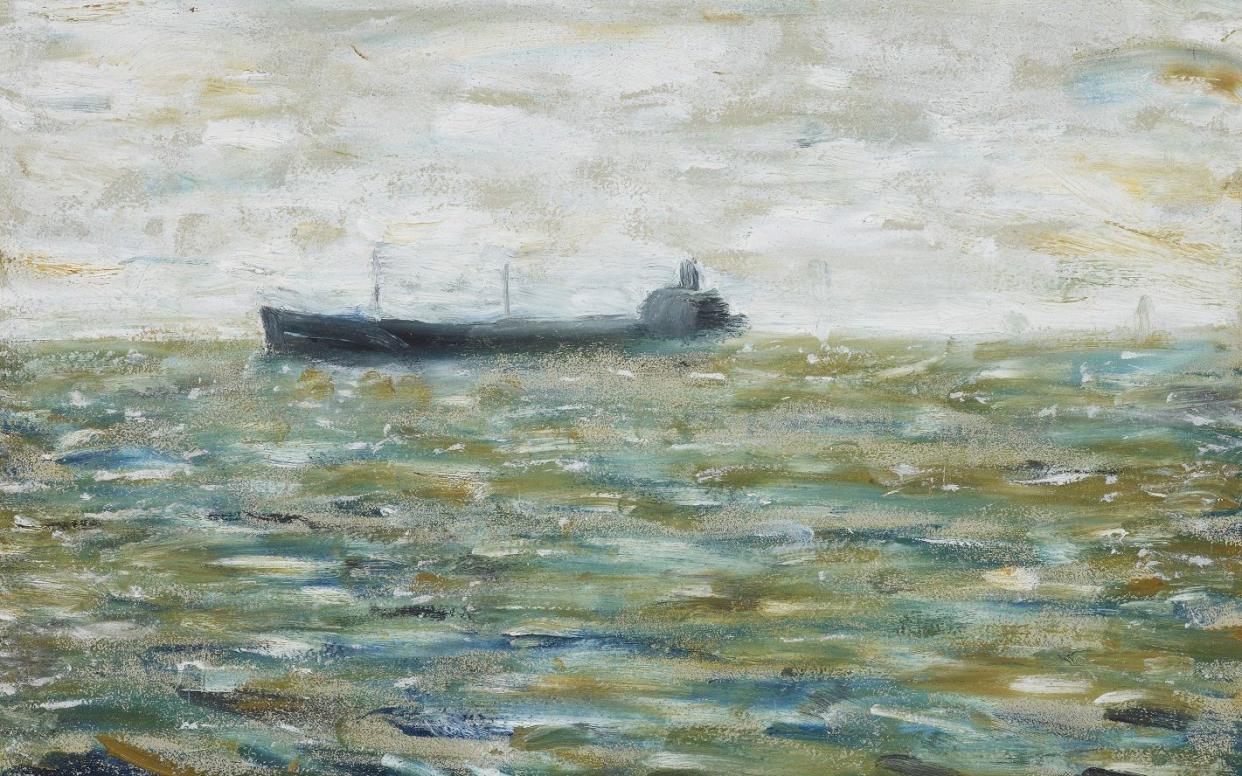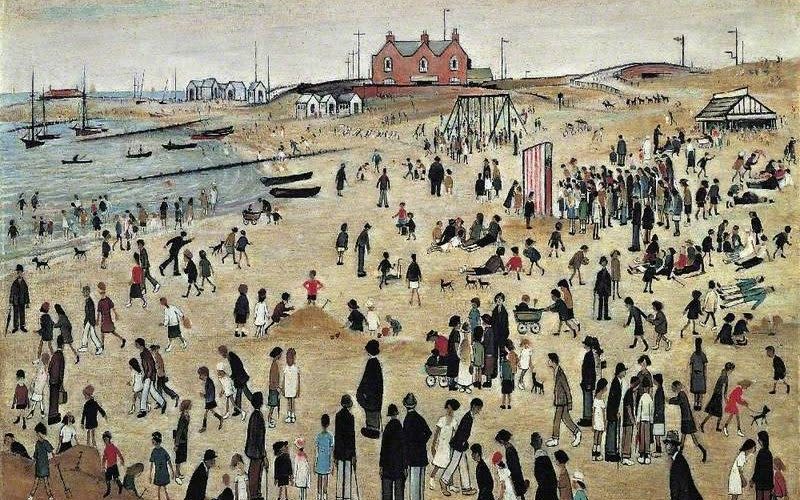Lowry and the Sea: The ‘matchstick men’ artist revealed in a whole new light

Other than Banksy, it’s hard to name a British artist who’s either more widely popular or more quintessentially urban than LS Lowry. This makes it doubly surprising to learn of a lesser-known side to the painter – one which led him far away from his scenes of industrial Salford, populated with his famous “matchstick men” that might as well be called “Marmite soldiers”, given their propensity to divide critical opinion.
The Granary Gallery in Berwick-upon-Tweed introduces us, instead, to Lowry the seascape painter – and it’s as refreshing as a dunk in the North Sea. This small but immaculately curated exhibition of 21 oil paintings, pastels and drawings drops us, to begin with, amid a bustling seaside carnival: July, the Seaside (1943) is a wholesale importation of Lowry’s massed figures from Greater Manchester to the coast, most of them still wearing their dark hats and big coats. By the end of the exhibition, however, the crowds have vanished. You’re confronted instead with The Sea (1963), in all its sublime emptiness. In this astonishing late work, the horizon is all but hazed out, while waves slowly gather momentum until their blue-grey crests threaten to roll out of the bottom of the picture and claim you.
After the death of Lowry’s mother in 1939, the 52-year-old artist found himself “bored almost to death”. She had held formidable emotional sway over him, matching the public’s adulation for his work with her own bafflement; Lowry reflected that “she didn’t understand my paintings, but she understood me and that was enough.” A trip to Anglesey in 1944 spurred him out of his rut; soon after, he began summering on the Northumberland coast, becoming a regular face at the Seaburn Hotel in Sunderland and at the Castle Hotel in Berwick. The exhibition includes a delightful figure drawing on Castle Hotel letterhead – a gift to a receptionist.

For all that he appreciated the joviality of the seaside, what Lowry really found here was a mirror to his loneliness. His boats and ships are strangely crewless, cleaving to the horizon: not human creations, but rather elemental omens. Early pastels of the 1920s are more picturesque, revealing the influence of Degas and Monet; but by the 1950s, his palette is pared back, effects of atmosphere achieved with the gradual accretion of layers of oil. The texture of these paintings is like haar, the thick sea fog that forms as warm air blows over the cold North Sea.
There’s something Dorian Gray-like about Lowry’s Self Portrait as a Pillar in the Sea (1966). By this time, the artist had grown wealthy and famous from his crowd scenes, editions of which were populating drawing rooms across the country. But here he presents himself as a single, inescapably phallic stack, buffeted by the same waves that have shaped the rock over millennia. Beneath the public persona, then, is a lonely, yearning man, claiming kinship with the sea. After this show, you’ll never look at Going to the Match in the same way again.
From Saturday until Oct 13. Tickets: 01289 330 999; maltingsberwick.co.uk

